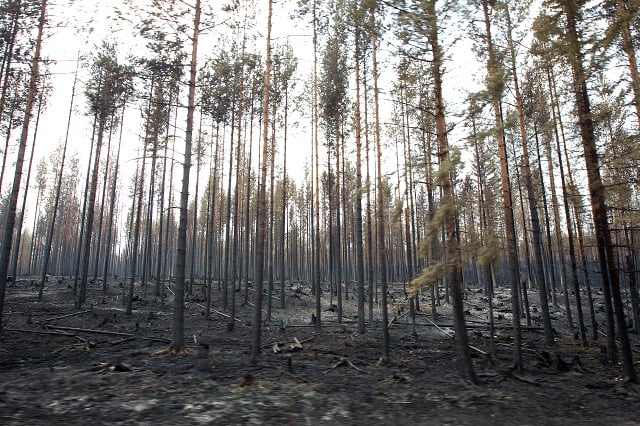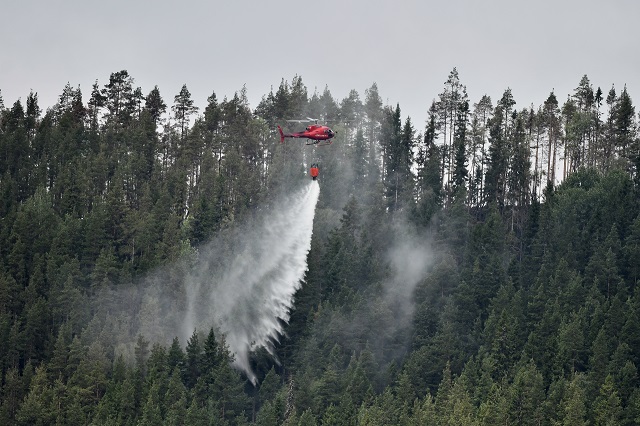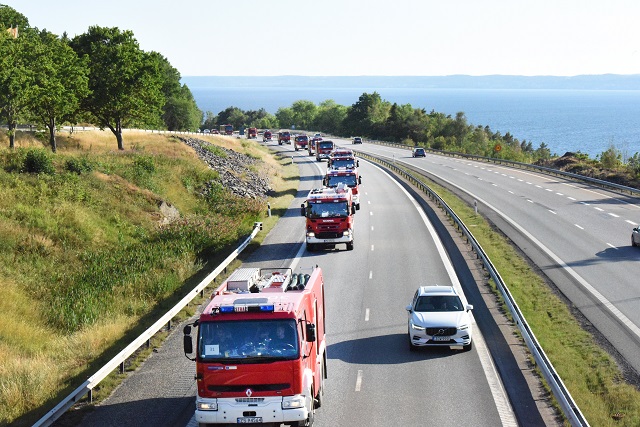Don't light a fire
There are widespread bans on lighting fires, including barbecues, in all public areas in many regions. This includes disposable barbecues, prepared fireplaces and even designated barbecue spots in public areas such as beaches, campsites and parks.
Many regions have extended the ban to include private areas such as gardens (in some areas it's still OK to light a fire in a designated grilling spot, and in some it's still allowed if you ensure it's a safe space with no chance of spreading) and you can find out exactly which bans are in place by checking your region's website through these links. But whatever the exact wording of the ban in your area, bear in mind that the Swedish Civil Contingencies Agency has urged against lighting any fires at all, and it's strongly advised to err on the side of caution.
If you think someone is violating the ban, you can call police on 114 14 (or 112 in an emergency situation). If you violate the ban and particularly if you cause a fire, you can be held liable and sentenced to a fine or even imprisonment.
Don't do anything likely to cause a fire
Avoiding open fires might seem like an obvious step to take, but there are other things you should be aware of in order to avoid contributing to the problem.
These include avoiding tossing cigarette butts or matches on the ground, avoiding smoking altogether in forests and fields, and avoiding use of machines likely to cause sparks or overheating.
Other precautions to take include ensuring you discard of all rubbish if you're out in nature: many kinds of rubbish are flammable, while a discarded bottle or piece of glass could be enough to start a fire in hot, dry conditions. Parking a vehicle on dry grass can also be a fire risk due to the heat from the vehicle.

A fire-damaged forest in Kårböle. Photo: Pernilla Wahlman/TT
Check for likely travel disruptions
The fires have led to some roads being closed off, and further disruptions are possible as the firefighting work continues.
Plan your route in advance by checking the Transport Administration's website to see which roads and areas are currently disrupted – click here for the most recent updates (in Swedish).
If you're worried about disruption to your journey, you can also call the Transport Administration on 0771-921 921 for up-to-date information in English. And while travelling, pay close attention to any road signs.
If you find yourself near a fire
If you see an open fire, call the special emergency service number 113 13 to report it – but authorities advise against reporting sightings of smoke, as this can spread over a large area. If you're at risk, call the emergency number 112, but avoid doing this unless you're in urgent need, as the wildfire situation has put strain on the service and has led to slightly slower answering times. All operators speak both English and Swedish.
You may also want to seek health advice if you have concerns about smoke inhalation, which is most serious in children, the elderly or people with respiratory conditions. If your situation isn't urgent, call 1177 for free, where you can explain your symptoms in Swedish or English and ask for advice. Call 112 or head to your nearest hospital if you need urgent medical attention.
As well as the fire risk, Sweden is experiencing unusually high temperatures so be prepared with water and sun cream before heading into nature, and be aware of the symptoms of heatstroke.

A helicopter drops water to fight one of the fires. Photo: Robert Henriksson/TT
Follow all information from the authorities
This is the most important item on the list. The wildfire situation may change quickly and it's crucial to keep yourself updated. The dry weather means that it doesn't take much for new fires to take hold and spread quickly, and authorities have warned that the risk remains “extreme”, even in the south, which has so far been far less seriously affected than central and northern Sweden. You can find the fire risk for the next few days on the website of weather forecasters SMHI.
The emergency service website SOS Alarm has regular updates giving an overview of the wildfire situation, including a map showing the fires currently burning. Local municipalities and regions will share relevant updates on their own homepages and social media (find a list of the pages to check here) – you can also get in touch with them directly, but be aware that the most severely affected regions may be receiving a lot of calls. It's also possible to download the Civil Contingencies Agency's app Brandrisk UTE (Fire risk) to check the situation on your phone.
Check Krisinformation as well, where you'll find government-provided information about the active VMAs (Important Messages to the Public). This includes evacuation orders as well as notices to stay inside with doors and windows closed in areas with heavy smoke.
For detailed information and the latest updates, tune into Sveriges Radio P4 in the region you're in, where there should also be regular updates on the traffic situation. Note that Swedish Radio's English-language service is also providing regular updates on the wildfire situation, and The Local has information regarding current evacuation orders, but please refer to authorities for the most recent information.
Finally, it's a good idea to let someone else know your plans ahead of time, perhaps even deciding on times when you'll check in with them. That way, if you find yourself in danger and without phone signal, they will be able to alert authorities.



 Please whitelist us to continue reading.
Please whitelist us to continue reading.
Member comments